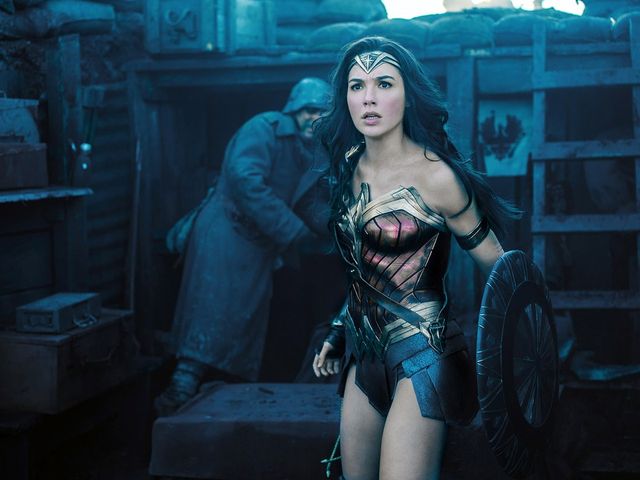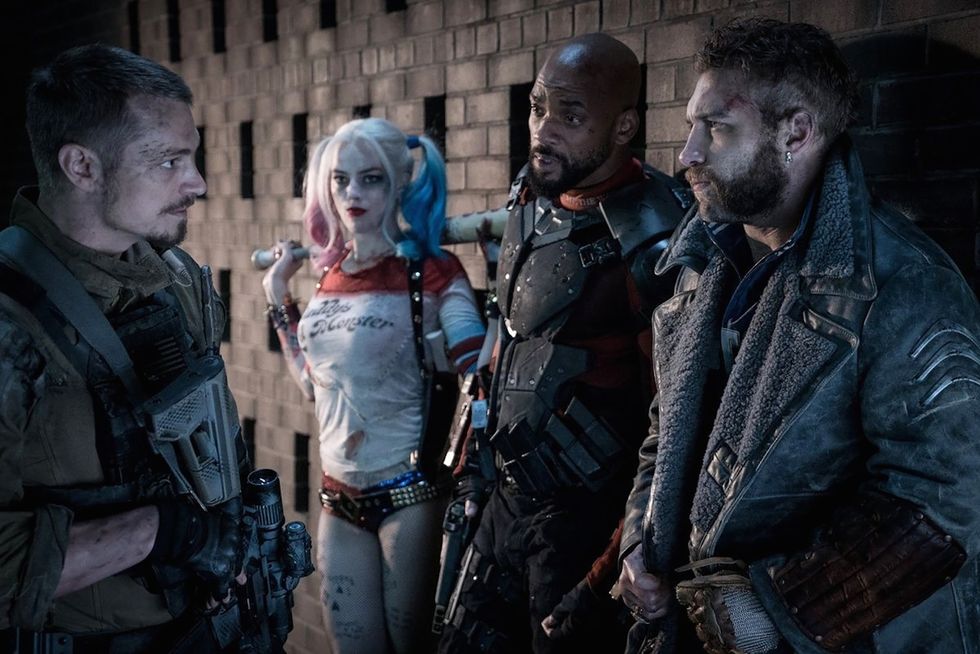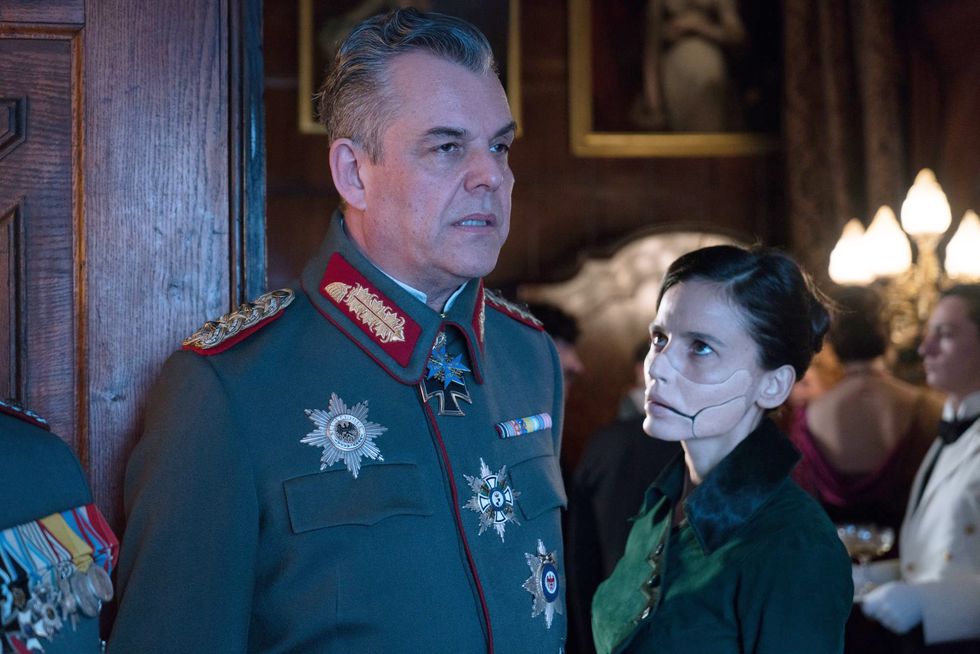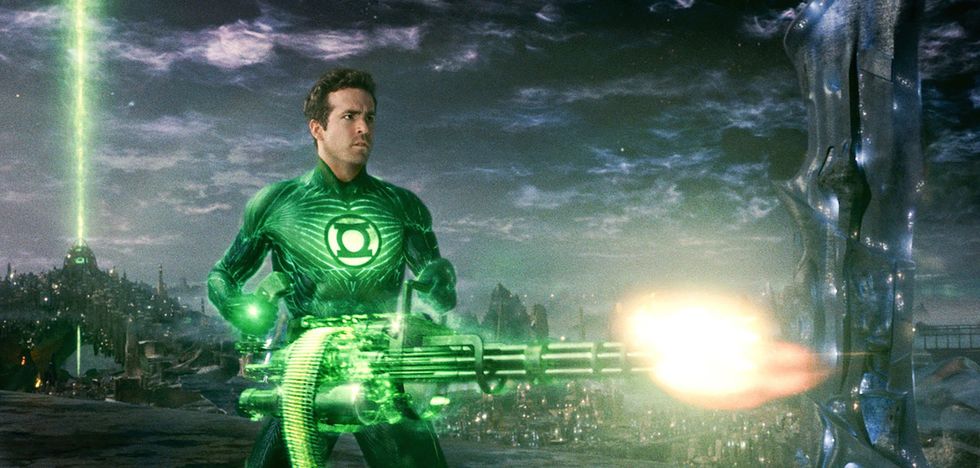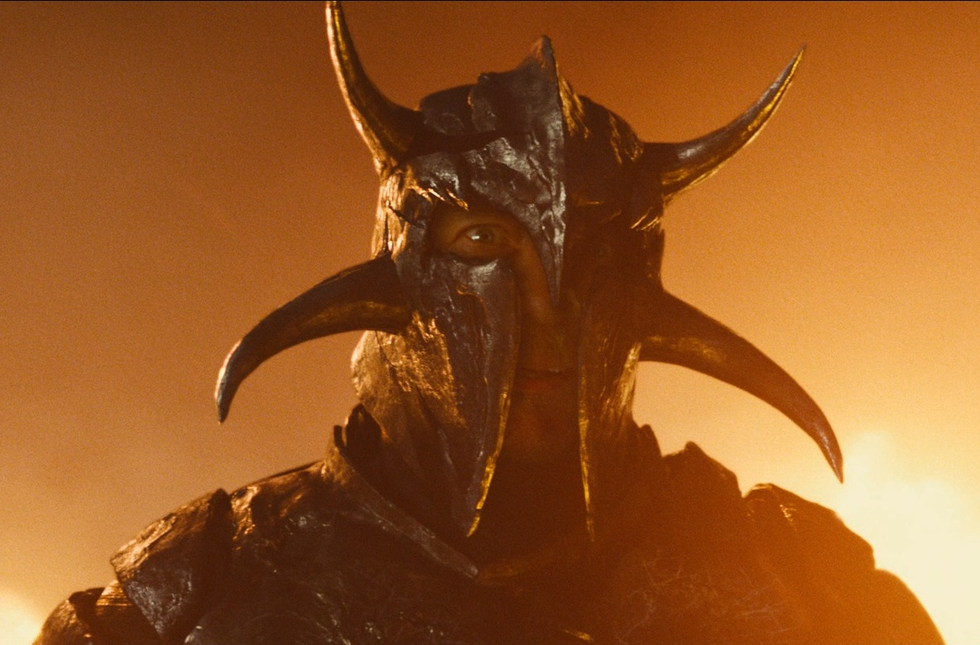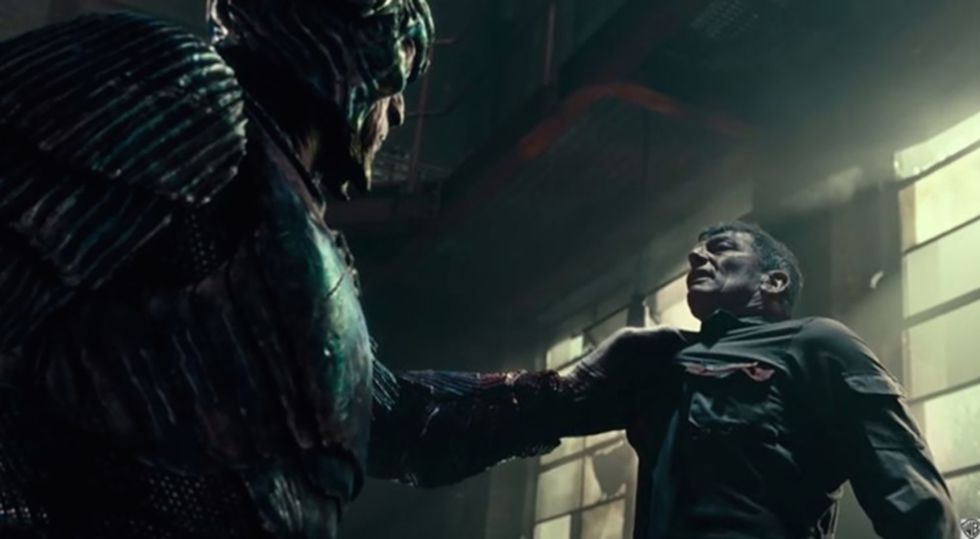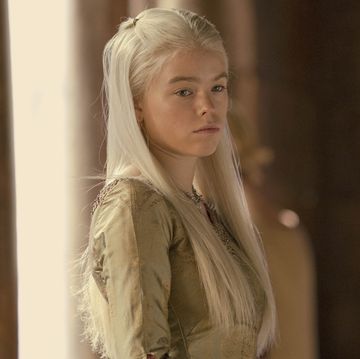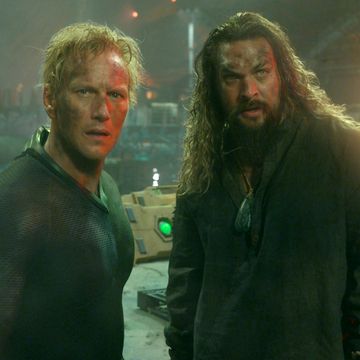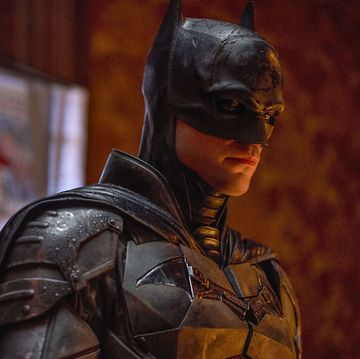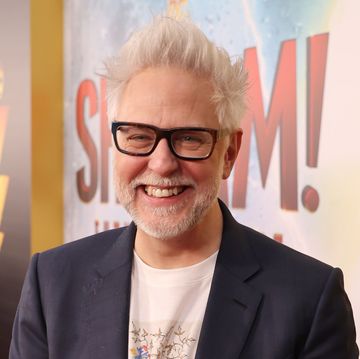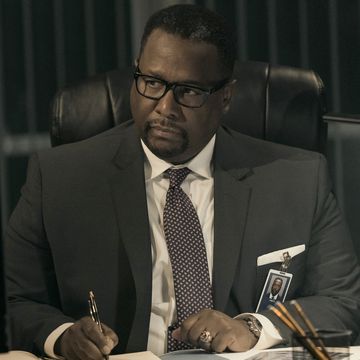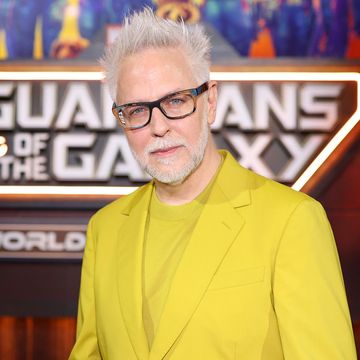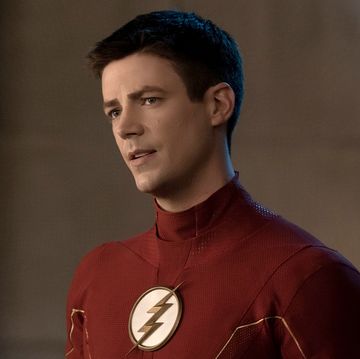The DC Extended Universe – sorry, Worlds of DC – is already pretty damn massive, and with a landmark year at the recent edition of San Diego Comic-Con, it's only set to get bigger.
During its panel on Saturday July 21, Warner Bros introduced first-look trailers for DC's Aquaman and Shazam!, adding to an ambitious slate of projects in the pipeline including the anticipated Wonder Woman 1984, Flashpoint, Batgirl, and the untitled Joker origin story.
But with great cinematic universes come great inconsistencies, and as the Worlds of DC continue to extend, a number of head-scratching plot holes have come to the fore. Although they might not diminish our love for the films, they certainly do get those brain cogs turning.
And they keep on coming. Here are nine more of the most glaring Worlds of DC plot holes – and some other modern DC superhero movies – that we just can't ignore. Needless to say, spoilers ahead…
1. Why did Captain Boomerang come back?
We're fully aware of the comedic connotations of asking such a question. But seriously, why did Boomerang return? In Suicide Squad, Jai Courtney's superhero bolts after Flag destroys his detonation device. Cut to the next scene and Boomerang's back with no explanation, joining the Squad on their dramatic slo-mo walk to confront the Enchantress.
This could just be the SS writers using his name for comic effect (he's Captain Boomerang and he came back – LOL). But unlike the Squad members, we're not psychic; a simple explanatory line would have been nice.
2. The danger of using real-life characters
Ludendorff (Danny Huston) was a significant character in Patty Jenkins' Wonder Woman. Sticklers for historical facts would have also noticed that he is based on the real-life figure of the same name – Erich Ludendorff – who was a prominent contributor to the German military efforts during World War I.
Even though the character dies at the end of the film, a quick Google search will tell you that he survived the war and later died of cancer in 1937, aged 72. So you're saying that he didn't die at the hands of an Amazonian Princess preceding an all-out battle with Ares, the god of war. Eh?
3. Will you be flying economy or business class, sir?
As the chaser to Christopher Nolan's near-perfect The Dark Knight, the sequel The Dark Knight Rises had a tough job on its hands and unfortunately it didn't quite deliver.
While it hit all the right superhero tones, it was a major misstep in the series for a number of reasons, one of those being the many inconsistencies that fans were more than willing to point out. Probably the biggest bugbear was how Bruce Wayne (Christian Bale) made it back to Gotham.
Earlier on in the film, Batman is broken by Bane (Tom Hardy) and imprisoned down a hole in the ass-end of nowhere sans costume, vehicles, weapons, or cash. In an almighty display of power, the cape-wearer manages to escape and the next thing you know he's in Gotham, teaming up with Catwoman in order to take down Bane.
Cool, great, but what about the interim? You know, the bit where Batman somehow travels across the world without his costume, vehicles, weapons, and cash. Even if he'd jumped on a plane, he had no money on him and Bane's henchmen had Gotham on lockdown. We're aware this is Batman we're talking about and so anything is possible, but the writers could have at least offered an explanation rather than pretending like breaking out of prison was his only obstacle.
4. Why didn't the Lanterns kill Parallax before?
If all it took to kill Green Lantern's Parallax – the universe's most powerful and feared supervillain – was Hal Jordan (Ryan Reynolds) pushing him into the sun, then why the heck didn't Abin Sur and all the other Lanterns simply do this before? There were 3,600 of them, for crying out loud.
You're telling us that any number of them couldn't have teamed up and done that years before instead of just imprisoning Parallax on an alien planet? For a legion of Lanterns, they sure aren't that bright.
5. Why didn't Ra's al Ghul's microwave kill EVERYONE?
Let's look again at Batman Begins baddie Ra's al Ghul's (Ken Watanabe) plan to use a Wayne Enterprises Microwave Emitter to vaporise the water in Gotham's sewer system, thus releasing massive quantities of fear-toxin into the air.
This would send the city's confused citizens, for use of a better word, batshit, leading them to carry out their own destruction.
Now we're just going to stop right here and point out the massive flaw in Ra's plan: the emitter's key function is to vaporise water, and he's put it on a train so it can zap on the go. But since the human body is made up of, like, 50-75% water, surely everyone nearby would have died?
There is a counterargument floating around that Ra's might have had some sort of targeting system to avoid this problem. But again, why didn't the writers tell us that? An explanation would've been nice (and likely would've prevented a world of pain for DCEU's dedicated theorists).
6. Where did Aquaman's telepathy come from?
At the beginning of Justice League, when a bearded Bruce Wayne asks Aquaman (Jason Momoa) to join his new world-saving gang of superheroes, he hands Batman a great big fish pie. However, when the big bad, Steppenwolf, attacks Atlantis in order to steal one of the immensely powerful Mother Boxes, Aquaman changes his mind and decides to join the league.
Fast-forward to the infiltration of Steppenwolf's army, when the team are stuck beneath Gotham Harbor, Aquaman turns up out of the blue (get it?) to save the day and help the league escape. But how did he know where they were? Aquaman's telepathy only reaches as far as the fishes and even if he did find out they were in Gotham, they were in an underground facility that by its very nature was top secret and inaccessible.
We're looking forward to this detail falling into the plot hole abyss in the upcoming Aquaman movie.
7. Zeus had all the power, so why didn't he use it?
Wonder Woman's (Gal Gadot) defeat of Ares at the end of the film was momentous, one made all the more powerful by the fact that a warrior who stands for peace and justice had just defeated the literal god of war. It was great. Poetic. Triumphant.
That said, it does raise a few questions. First, why didn't Zeus and all the gods win in their fight against Ares? After all, Wonder Woman was created by Zeus and therefore defeated the foe with the power that he gave her. And also, if creating Wonder Woman meant he could kill Ares, why was it the last thing he did? Too many questions, not enough answers.
8. The Daily Planet: An insult to journalism
The Daily Planet is a newspaper that seems to be stuck in the fantasy world of cinema, a point that is unequivocally proven in Batman v Superman when editor Perry White (Laurence Fishburne) assigns Clark Kent (Henry Cavill) to write a follow-up on a major football game. Despite the fact that Clark is a rookie journalist and The Daily Planet is a major metropolitan newspaper that would quite clearly have an entire editorial team dedicated to sports coverage – who wouldn't dream of leaving such a significant assignment to a cub reporter.
Other annoying DP pointers: Lex Luthor's arrest over the bombing of Congress wasn't even close to front page news. Clark never gets in trouble for not showing up. He doesn't get in trouble for delving into stories he's been told to drop. And Clark has a hard time actually typing up the stories he's assigned.
Is Perry the worst editor ever, or what? Or perhaps we should be asking: how the hell does The Daily Planet stay in business?
9. Hello Mother Boxes, this is Steppenwolf calling
Justice League succeeded in that it brought together a bunch of popular superheroes for a high-octane crossover adventure. However, it also left a load of plot holes all over the place despite the fact that its premise was so simple: Steppenwolf is searching for the three Mother Boxes so he can destroy the Earth.
It's up to the Justice League to stop him from getting hold of said boxes. Easy enough so far, right? Which is why it's baffling that the writers fluffed Steppenwolf's quest so significantly. We learn early on that the big bad of the film has a connection that allows him to teleport to the boxes, hence why he is able to zip directly over to the one hidden in Atlantis. So why does he spend a good portion of the movie interrogating scientists in order to find out another one's location?
It makes absolutely no sense that he should need to roast a bunch of Earthlings when he could just cut out the middleman and teleport straight to it.
